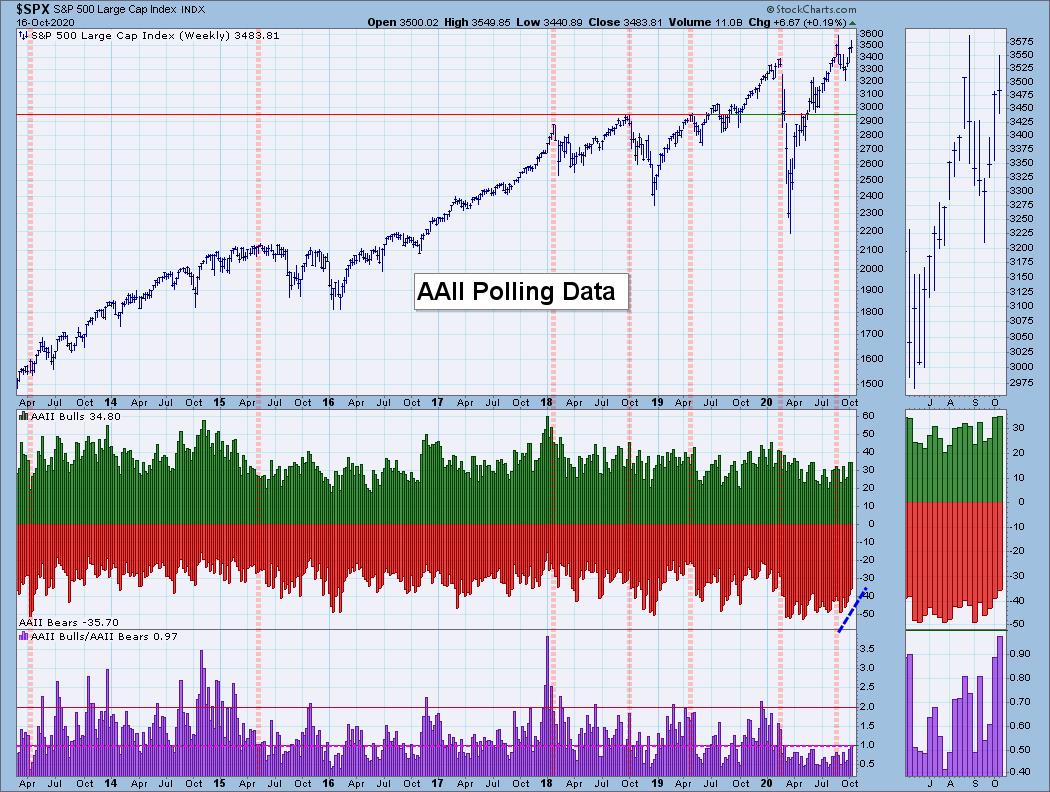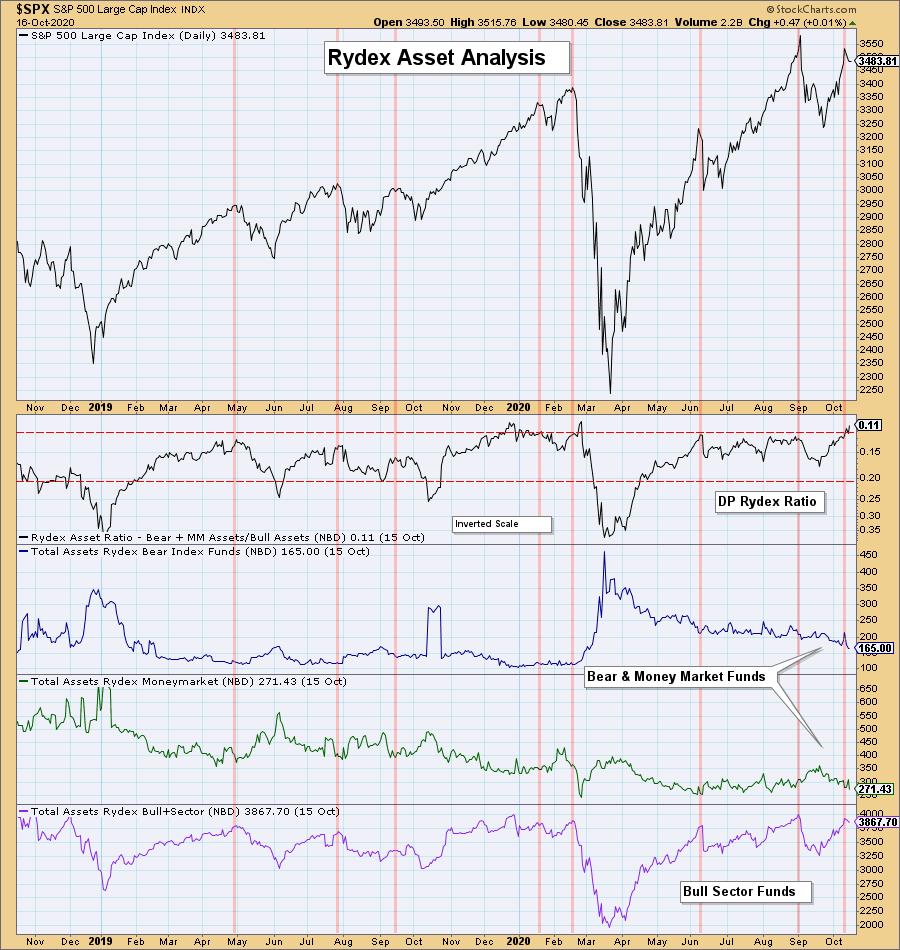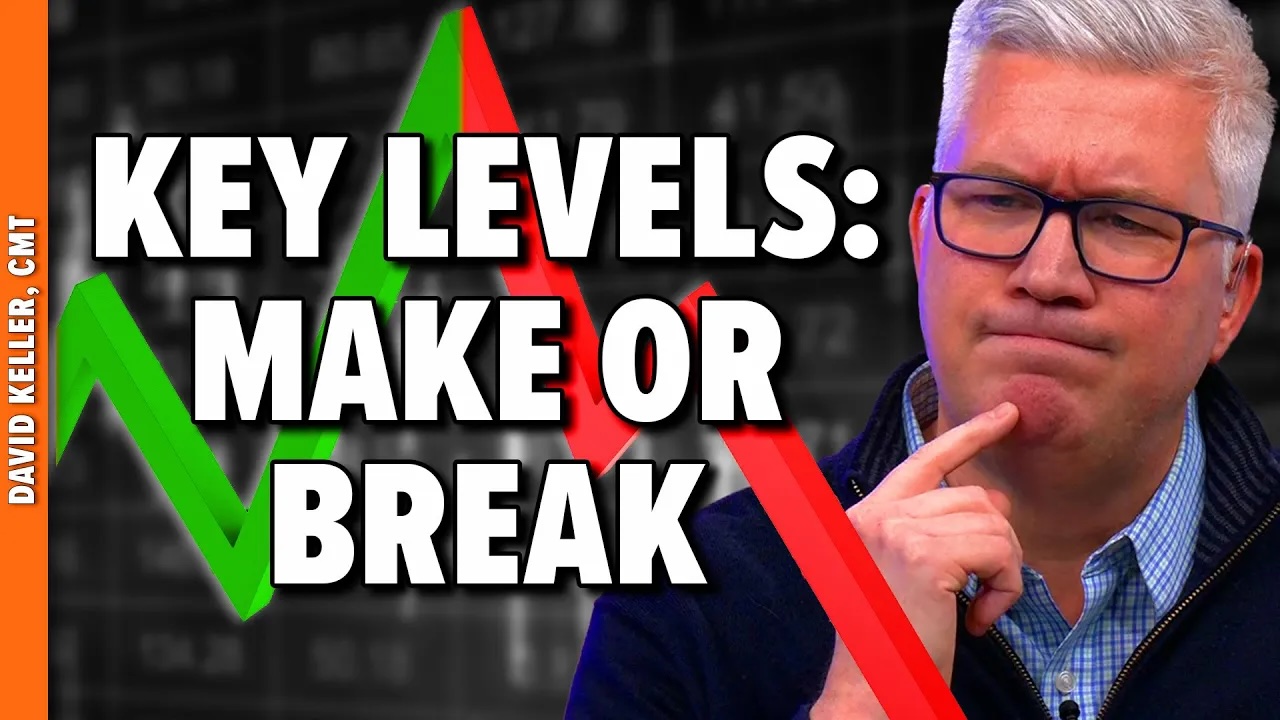I have heard rumblings of market participants beginning to "feel" bearish about the market as it pulled back this past week. That information can not only be gleaned from business news channels, but can also be pulled from polling data. Below is the American Association of Individual Investors' (AAII) poll. You can find the data or take the poll yourself at aaii.org. Granted, we only have about 35% of respondents bullish, but the interesting result is there are fewer and fewer bears. The poll is weekly and the current results are for last Wednesday (10/14).

Rydex Asset Analysis is different. This measures sentiment based on tracking actual assets in bear funds, money markets and bull funds. They come from a group of mutual funds that used to be offered by a company called Rydex; now Guggenheim manages them. It's a "money where your mouth is" indicator. A look at the chart below says market participants are not getting bearish. Assets are growing in the bull funds and are steadily being pulled or lost from bear funds and money markets. Participants are clearly still bullish. Notice the Rydex Ratio is now very overbought. The chart is annotated with major market tops, so we can see that overbought conditions on the Rydex Ratio is very bearish.

Conclusion: Remember that sentiment is a contrarian indicator. When nearly all market participants, newspapers, magazines, news broadcasters, etc. are very bullish, that is when to expect a market reversal. Don't miss Monday's free DecisionPoint Trading Room! Information for registering and/or watching the recording from last Monday are below.
Technical Analysis is a windsock, not a crystal ball.
Happy Charting!
- Erin

It's FREE!
***Click here to register for this recurring free DecisionPoint Trading Room!***
Did you miss the 10/12 trading room? Here is a link to the recording (password: qE58C9.E).
For best results, copy and paste the password to avoid typos.
Watch the latest episode of DecisionPoint on StockCharts TV's YouTube channel here!
Disclaimer: This blog is for educational purposes only and should not be construed as financial advice. The ideas and strategies should never be used without first assessing your own personal and financial situation, or without consulting a financial professional. Any opinions expressed herein are solely those of the author, and do not in any way represent the views or opinions of any other person or entity.
NOTE: The signal status reported herein is based upon mechanical trading model signals, specifically the DecisionPoint Trend Model. They define the implied bias of the price index based upon moving average relationships, but they do not necessarily call for a specific action. They are information flags that should prompt chart review. Further, they do not call for continuous buying or selling during the life of the signal. For example, a BUY signal will probably (but not necessarily) return the best results if action is taken soon after the signal is generated. Additional opportunities for buying may be found as price zigzags higher, but the trader must look for optimum entry points. Conversely, exit points to preserve gains (or minimize losses) may be evident before the model mechanically closes the signal.
Helpful DecisionPoint Links:
DecisionPoint Alert Chart List
DecisionPoint Golden Cross/Silver Cross Index Chart List
DecisionPoint Sector Chart List
Price Momentum Oscillator (PMO)
Swenlin Trading Oscillators (STO-B and STO-V)







